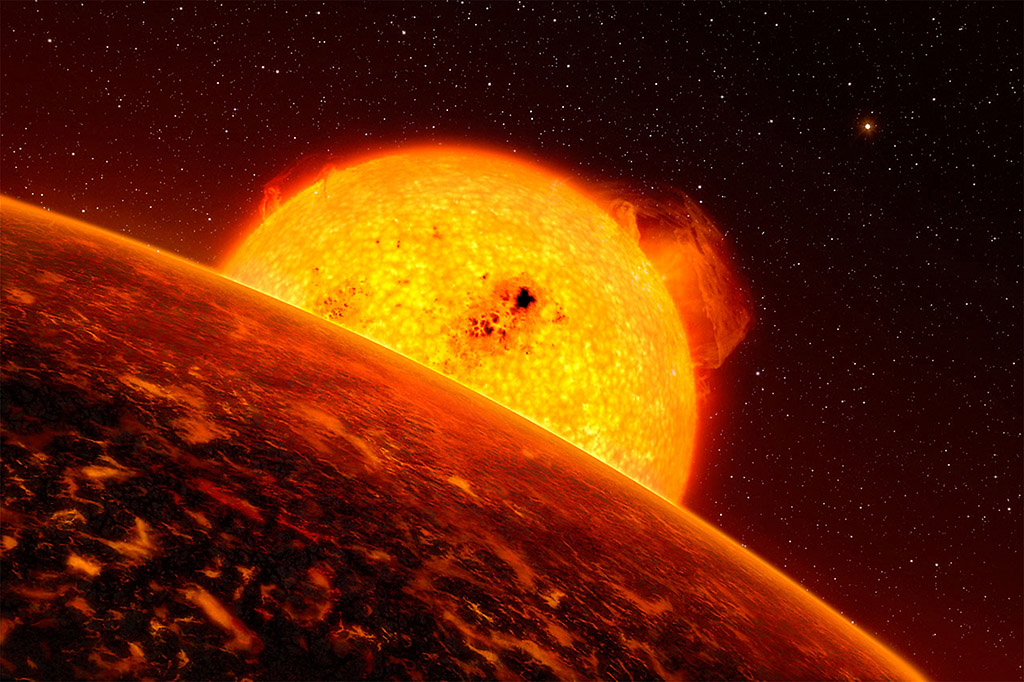Molten exoplanet CoRoT-7b is a good analog for the Star Wars sizzling lava planet Mustafar. While you won’t see any lightsaber duels on CoRoT-7b, the planet’s temperature of 3,600 degrees Fahrenheit (1,982 Celsius) isn’t far off from the fictional magma mining station. (ESO/L. Calcada)
Home Molten exoplanet CoRoT-7b is a good analog for the Star Wars sizzling lava planet Mustafar. While you won’t see any lightsaber duels on CoRoT-7b, the planet’s temperature of 3,600 degrees Fahrenheit (1,982 Celsius) isn’t far off from the fictional magma mining station. (ESO/L. Calcada) Molten exoplanet CoRoT-7b is a good analog for the Star Wars sizzling lava planet Mustafar. While you won't see any lightsaber duels on CoRoT-7b, the planet's temperature of 3,600 degrees Fahrenheit (1,982 Celsius) isn't far off from the fictional magma mining station. (ESO/L. Calcada)




